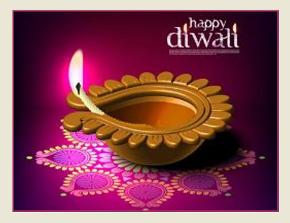The Fall Equinox begins around September 21 0r 22
In the Northern Hemisphere, the sun is rising later now, and nightfall comes sooner. At this equinox, day and night are about equal in length. For us in the Northern Hemisphere, people are enjoying the cooler days of autumn, shorter days and longer nights. South of the equator, spring begins. Learn more about this equinox by following the links below: We have an equinox twice a year – spring and fall – when the tilt of the Earth’s axis and Earth’s orbit around the sun combine in such a way that the axis is inclined neither away from nor toward the sun.
and this season ends in the third week of December
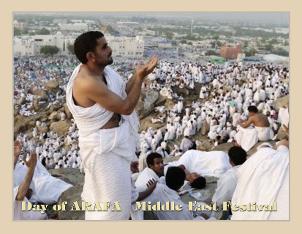
The holy Day of Arafah holy Day Islamic lunar calendar
The Day of 'Arafah (Arabic: يوم عرفة) is the holiest day in Islam that falls on the 9th day of Dhul Hijja (ذو الحجة) of the lunar Islamic Calendar. This happens to be approximately 70 days after the end of the month of Ramadan. It is the second day of the Hajj pilgrimage and the day after is the first day of the major Islamic Holiday of Eid ul-Adha. [3] At dawn of this day, Muslim pilgrims will make their way from Mina to a nearby hillside and plain called Mount Arafat and the Plain of `Arafah. It was from this site that Prophet Muhammad gave one of his last famous sermons in the final year of his life. Muslims hold that part of the Qur'anic verse announcing that the religion of Islam had been perfected was revealed on this day.
Eid-Ul-Adha Muslim Holy Day International
Eid al-Adha 2016 is expected to begin on Sunday, September 11. Authorities in Saudi Arabia will confirm the actual dates of the Muslim festival and the Hajj pilgrimage in Mecca on September 1 based on the sighting of the moon. If a new moon is sighted on September 1, then the first day of Eid al-Adha will be celebrated from September 11. But if the moon is not visible on the month's first day, then the festival will be celebrated on Monday, September 12. In the Islamic calendar, Eid al-Adha occurs on the 10th day of the Dhu al-Hijjah lunar month, and is also the third day of the Hajj pilgrimage in Mecca. The month of Hajj The first 10 days are a special time of religious prayer and recitation. It is a time for prayer and sacrificing, but not a time for fasting.
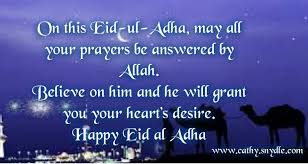
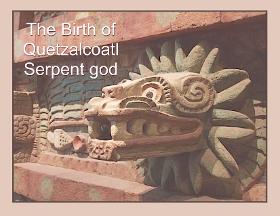
Birthday of Quetzalcoatl ...Mexico ...September 20th, 2017 ...
The historical Quetzalcoatl was probably born around AD 947. His father, Mixcoatl, was ruler of the Toltecs. He was originally named Ce Acatl Topitzin, meaning "Our Prince Born on Ce Acatl," the latter being an important Toltec holiday. His birth was immediately preceded by a horrendous family tragedy, the father having been deposed and murdered by a jealous brother named Ihuitmal. The unborn child's pregnant mother, Chimalma, fled to Tepoztlan. Before dying in childbirth, Chimalma declared that her infant son was divinely conceived because she had swallowed a piece of blue-green jade.
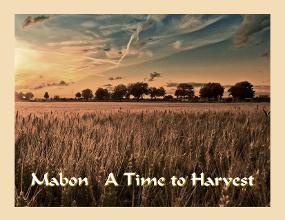
Mabon Pagan Harvest Festival September 22nd
Mabon, or Autumn Equinox, is one of the solar festivals on the Wiccan Wheel of the Year. In the Wicca calendar, this festival falls near September 21 in the Northern Hemisphere, and March 21 in the Southern Hemisphere. Equinox means "equal night." On this Wiccan Sabbat, day and night are equal forces, and now Darkness is beginning to gain the ascendancy. As with all spiritual matters, we must ask: "What does this mean, symbolically?" Putting aside old superstition and association of "dark" with "evil," what does Autumn Equinox tell us?
The Fall Equinox Earth Event September 22nd -23rd
While the September equinox usually occurs on September 21st - 23rd, it can very rarely fall on September 21 or September 24. A September 21 equinox has not happened since 1000 CE. However, in the 21st century, it will happen twice – in 2092 and 2096. The last September 24 equinox occurred in 1931, the next one will take place in 2303. The equinox dates vary because of the difference between how the Gregorian calendar defines a year (365 days) and the time it actually takes for Earth to complete its orbit around the Sun (about 365 and 1/4 days). This means that each September equinox occurs about 6 hours later than the previous year's September Equinox. This eventually moves the date by a day.

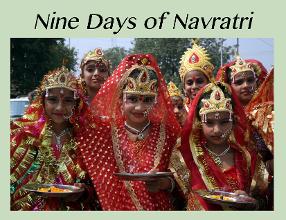
Nine Days of Navratra INDIA Mid -Late September
Of the nine days of Navratra, the first day of Ghatasthapana, ( Fall equinox Sept. 21st-23rd ) the seventh day of Phulpati, the eight day Maha Astami and the ninth day Maha Nawami are of special significance in the 10 day Nepali Hindu festivals of Dashain. In addition to the everyday regular rituals, special rituals are performed on these days. The worshippers do navpatrika puja, also known more popularly as phulpati, on the seventh day to ask the goddess for forgiveness for the sins committed by the family members and put an end to their difficulties and misfortunes and to bless the family with peace and well-being.
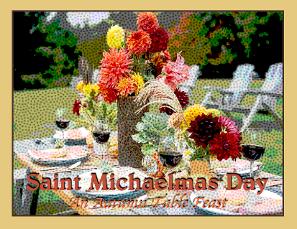
Saint Michaelmas Day Christian September 29th
The custom of baking a special bread or cake, called Struan Micheil, St Michael's bannock, or Michaelmas Bannock on the eve of the Feast of Saint Michael the Archangel probably originated in the Hebrides. The bread was made from equal parts of barley, oats, and rye without using any metal implements. In remembrance of absent friends or those who had died, special Struans, blessed at an early morning Mass, were given to the poor in their names. Nuts were traditionally cracked on Michaelmas Eve. Folklore in the British Isles suggests that Michaelmas day is the last day that blackberries can be picked. It is said that when St. Michael expelled Lucifer, the devil, from heaven, he fell from the skies and landed in a prickly blackberry bush. Satan cursed the fruit, scorched them with his fiery breath, and stamped and spat on them, so that they would be unfit for eating. As it is considered ill-advised to eat them after 29 September, a Michaelmas pie is made from the last of the season.
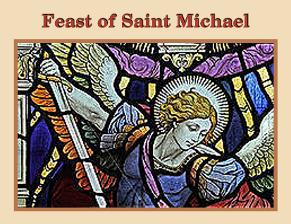
The Feast Day of Saint Michael ( Italy September 29th )
This is the feast day of St. Michael and all the Angels. It is the most ancient of all the angel festivals. The Anglican church celebrates all angels, both name and unnamed on one day. Roman and Orthodox Churches separate them into two categories (with the unnamed angels having their feast day on October 2nd). His feast, originally combined with the remembrance of all angels, had been celebrated in Rome from the early centuries on September 29. The Synod of Mainz introduced it into all the countries of the Carolingian Empire and prescribed its celebration as a public holiday. All through medieval times Saint Michael’s Day was kept as a great religious feast (in France even up to the last century) and one of the annual holiday seasons as well. The churches of the Greek Rite keep the feast on November 8, and a second festival on September 6. In France the apparition of the Archangel at Mont-Saint-Michel is commemorated on October 16. Another apparition, on Mount Gargano in Apulia, Italy, is honored by a memorial feast in the whole Western Church on May 8.
Feast of Saint Francis o Assisi Day Catholic October 4th
Many churches in the United States celebrate the Feast of St Francis of Assisi on October 4 each year. The feast commemorates the life of St Francis, who was born in the 12th century and is the Catholic Church's patron saint of animals and the environment. It is a popular day for pets to be “blessed”.Many children in the USA bring their pets to the church to be blessed on St Francis’ feast day because of his love for animals as expressed in his Canticle of Creatures. St Francis is the patron saint of animals so many churches offer animal blessing services, usually held on or around October 4. The services may include a verbal blessing and holy water and are usually held at a place where different animals can gather.
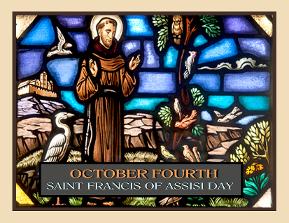

The Naga Fire Ball Festival Thailand October Full Moon
Naga Fireball Festival takes place in Nong Khai around the full moon of the eleventh lunar month ( 3rd to the 7th of October 2017 ). This demonstration of what many believe is evidence for the paranormal goes on for two nights. The dates coincide with the day before and the day of the Buddhist holiday of Wan Awk Pansa, the end of the rains retreat. Traditionally, the fire balls are believed to come from the naga, a mythical serpent that lives in the water. According to legend, the naga was so amazed by the Lord Buddha’s teaching, that he took human form and became ordained as a monk. However, the Buddha’s teaching stipulates that only human’s can become monks. There are three villages on the Lao side of the river where people congregate to view the fireballs. These are Pakngum, Nonxai and Nongkhiet.
Sukkot Jewish holy week October 4th - October 11th 2017
Many Jewish Americans build a temporary booth known as the sukkah, which is where they eat, sleep and use for the Sukkot period, which lasts for about seven days. The first day of Sukkot is kept like the Sabbath so many Jewish people do not engage in certain work activities on this day. The rest of the days during the Sukkot period are days when work is permitted. Many Jewish people in north-east United States hang dry squash and corn in the sukkah to decorate it. These vegetables are sometimes used for Halloween and Thanksgiving afterwards. Building and decorating a sukkah prior to Sukkot is a fun project for many Jewish Americans, in a similar fashion to decorating the Christmas tree prior to Christmas Day. Many also observe a religious duty, or mitzvah, known as waving the four species (of plants) and reciting a blessing. This deed is usually performed each day during Sukkot (except for the Sabbath).
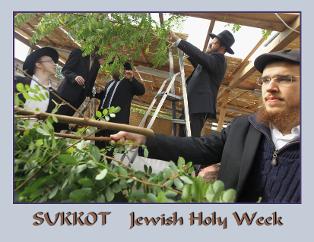
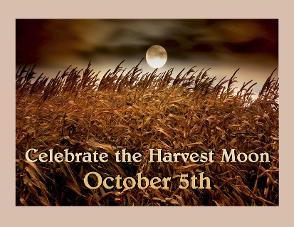
The Harvest Moon Northern Hemisphere Earth Event October 2017
That fact was important to people in earlier times. For farmers bringing in the harvest, before the days of tractor lights, it meant there was no long period of darkness between sunset and moon-rise for several days after full moon. And that meant farmers could work on in the fields, bringing in the crops by moonlight. Hence the name Harvest Moon. At our mid-northern latitudes, watch for the Harvest Moon to shine from dusk until dawn for the next few to several days. The closest full moon to the autumn equinox reaches the crest of its full phase on October 5 at 18:40 UTC. For us in the continental U.S., the moon turns precisely full during the daytime hours on Thursday, October 5. By U.S. clocks, that full moon instant comes at 2:40 p.m. Eastern Daylight Time, 1:40 p.m. Central Daylight Time, 12:40 p.m. Mountain Daylight Time, 11:40 a.m. Pacific Daylight Time, 10:40 a.m. Alaskan Daylight Time and 8:40 a.m.Hawaiian Standard Time
The day of Mars Roman times October 15th
The October Horse is the only instance of horse sacrifice in Roman religion;[4] the Romans typically sacrificed animals that were a normal part of their diet. The unusual ritual of the October Horse has thus been analyzed at times in light of other Indo-European forms of horse sacrifice, such as the Vedic ashvamedha and the Irish ritual described by Giraldus Cambrensis, both of which have to do with kingship. Although the ritual battle for possession of the head may preserve an element from the early period when Rome was ruled by kings,[5] the October Horse's collocation of agriculture and war is characteristic of the Republic. The sacred topography of the rite and the role of Mars in other equestrian festivals also suggest aspects of initiation and rebirth ritual. The complex or even contradictory aspects of the October Horse probably result from overlays of traditions accumulated over time
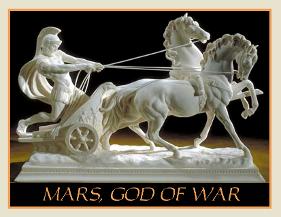
Saint Luke's Day Christian October 18th
Luke wrote one of the major portions of the New Testament, a two-volume work comprising the third Gospel and Acts of the Apostles. In the two books he shows the parallel between the life of Christ and that of the Church. He is the only Gentile Christian among the Gospel writers. Tradition holds him to be a native of Antioch, and Paul calls him “our beloved physician.” His Gospel was probably written between 70 and 85 A.D. Luke appears in Acts during Paul’s second journey, remains at Philippi for several years until Paul returns from his third journey, accompanies Paul to Jerusalem, and remains near him when he is imprisoned in Caesarea. During these two years, Luke had time to seek information and interview persons who had known Jesus. He accompanied Paul on the dangerous journey to Rome where he was a faithful companion.
International Cemetery Weekend ...Earth Event
Last weekend in October,
Traditionally, the last days of October are thought of as the harvesting time to honor our ancestors. Many cultures celebrate " Day of the Dead " or " Halloween ". Sometimes this means visiting a specific ancestral building, a grave yard, an acient river or forest area. It might depend on who your ancestors were and what religion or cosmic belief one might follow. Cemeteries and sacred burial grounds exist everywhere on planet Earth and have so for thousands of years. You might find it very heart warming to visit your family's cemetery and offer a prayer , some favorite food or just a little message or hello. ...A night time visit ...might bring on a specialspiritual experience !
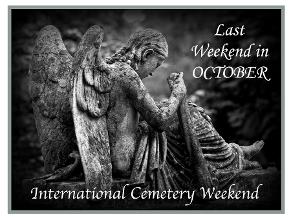
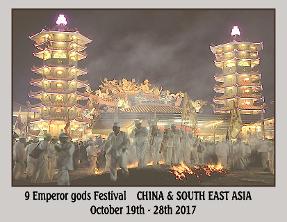
The 9 Emperor gods Festival ...China/Asia
...October 19-28th 2017
Nine Emperor Gods Festival is a very popular nine-day festival, held in Singapore, Thailand and Malaysia. It begins on the eve of the 9th lunar month of the Chinese calendar. According to the traditional Chinese religion, the Nine Emperor Gods are the nine sons manifested by Father Emperor Zhou Yu Dou Fu Yuan Jun and Mother of the Big Dipper Dou Mu Yuan Jun. The Nine Emperor Gods are formed by the seven stars of the Big Dipper of the North Ursa Major. A carnival-like atmosphere pervades the temple throughout the nine-day festival. During this period of time, the constant tinkling of a prayer bell and chants from the temple priests are heard. Most devotees stay at the temple, eat vegetarian meals and recite continuous chanting of prayer. It is believed that there will be rain throughout the nine days of celebration.
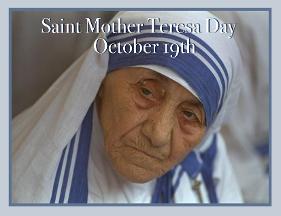
Saint Mother Teresa Day International October 19th
In 1979 Mother Teresa was awarded the Nobel Peace Prize. She died in Calcutta on September 5, 1997 at the age of 87. She was beatified on October 19, 2003 as Blessed Teresa of Calcutta. Anjezë Gonxhe Bojaxhiu was born on August 26, 1910 in Skopje, Macedonia. Her family moved to Albania in 1934, but before that Anjezë had moved to Ireland to join the order of the Sisters of Loreto. There she adopted a new name – Teresa. The order sent Teresa to Calcutta, where she taught in a women's school and helped poor people. She created a congregation, that helped all poor and sick people regardless of their religion and nationality. The activity of the congregation spread out of the boundaries of Calcutta and India in 1965. Nowadays the congregation is active in over 100 countries around the world, mostly in the economically unstable regions and in the natural disaster zones.
Five Days of Diwali ...India October ...DAY VARIES
Diwali is a five days long festival, celebrated in all over India with great zeal. This year Diwali celebration will start from October 17th - 21st, 2017. During the Diwali festival, people do shopping of cloths and gold ornaments, which they wear before goddess Laxmi pujan. Flowers, sweets, food, amongst others are some of the ways in which people try to start a fresh and welcome a new year of bliss. On the night of Deepavali, Lord Ganesha and Goddess Lakshmi puja has been performed everywhere in India to invoke their blessings for one’s well-being and growth. People get the blessing of Lord Ganesh and Goddess Laxmi in the form of health, wealth, prosperity and happiness. Apart from this, Deepawali also has a deeper significance in Jainism as on this special day, Lord Mahavira, the last of the Jain Tirthankar of this era, got Nirvana at Pavapuri, and therefore they celebrate it referring to it as Deva Devali. In Newar Buddhism as well, this festival has relevance as Ashok Vijayadashami as Emperor Ashoka converted to Buddhism on this very occasion.
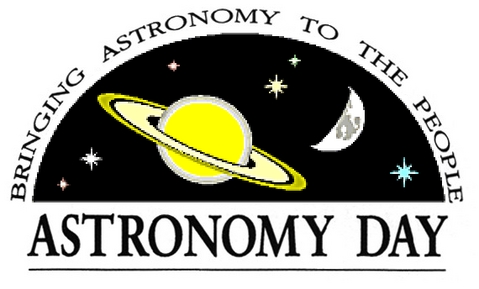
International Astronomy Day Spring & Fall ( CHART )
Astronomy Day was created in 1973 by Doug Berger, then president of the Astronomical Association of Northern California. The unofficial holiday is an attempt to raise the interest of the general public in astronomy by giving them easy access to astronomical instruments like telescopes. The holiday also seeks to bridge the knowledge gap by giving the public a chance to interact with astronomers and space scientists.
http://www.timeanddate.com/holidays/fun/astronomy-day
SAMHAIN & HOLLOWEEN ( October 31st. )
Samhain became the Halloween we are familiar with when Christian missionaries attempted to change the religious practices of the Celtic people. In the early centuries of the first millennium A.D., before missionaries such as St. Patrick and St. Columcille converted them to Christianity, the Celts practiced an elaborate religion through their priestly caste, the Druids, who were priests, poets, scientists and scholars all at once. As religious leaders, ritual specialists, and bearers of learning, the Druids were not unlike the very missionaries and monks who were to Christianize their people and brand them evil devil worshiper.
( DAY of the DEAD )
( NOVEMBER 1st ) ' Day of the DEAD ), Traditionally, it is an observance festivity to celebrate and honor one’s ancestors. It’s based on the belief that there is interaction between the living world and the world of spirits. On the Día de los Muertos, the almas, or the spirits of the dead, are said to come back for family reunions. Many celebrate setting up ofrendas (altars) in their homes to honor the memory of deceased loved ones and to welcome their visiting souls. Others visit their loved one’s cemetery plot and decorate it with flowers, candles and food. The holiday is celebrated with family and community gatherings, music, and feasting, and the festivity of its observance acknowledges death as an integral part or life.
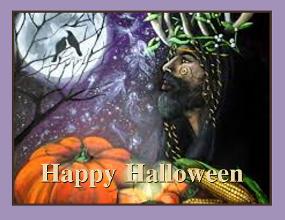
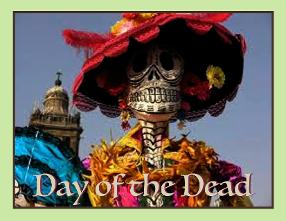
Holidays celebrated in the month of November
All Saints Day Catholic Holy Day November 1st
Today in many historically Catholic countries, All Saint’s Day is a national holiday. In most Spanish- and Portuguese-speaking countries, All Saints Day is celebrated with great pageantry. In Mexico, it is also called the Day of the Innocents, honoring deceased children and infants, and kicks off the week-long celebration of the Day of the Dead. In Lisbon, Portugal, children celebrate the Pão-por-Deus, and go door to door where they receive cakes, nuts and pomegranates – believed to be the basis of the trick-or-treating tradition in the U.S. In Austria, Belgium, France, Hungary, Italy, Luxembourg, Malta, Portugal, Spain, and American cities such as New Orleans people take flowers to the graves of dead relatives. Read more at http://www.beliefnet.com/love-family/holidays/halloween/why-do-we-celebrate-all-saints-day.aspx?p=5#jBuUp7Jz9ip4lPS0.99
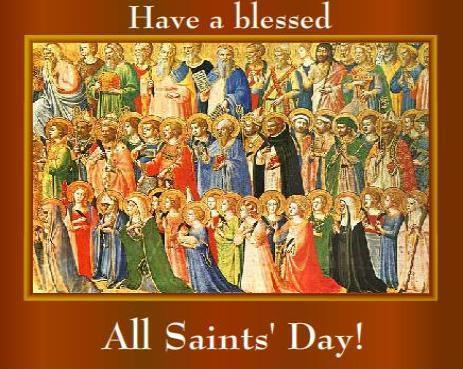
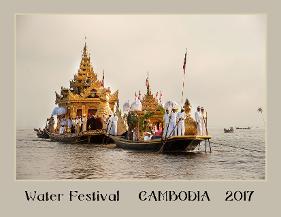
National Water Festival Cambodia November 2nd - 4th 2017
The annual three-day Water Festival competes with the Khmer New Year for being the most important holiday for Cambodians. The boat races on the Tonle Sap and the carnival atmosphere ashore attract millions of people from all over the country. A smaller Water Festival is held around Angkor Wat, but for the real thing you’ll have to go to Phnom Penh. In Khmer the annual Water Festival is called Bonn Om Toeuk. The Water and Moon Festival ushers in the fishing season. It also marks the reversal of the current in Tonle Sap river. Boat races as well as fireworks displays are held at the river. More than 400 boats, propelled by precision-trained oarsmen, take part in the annual boat race, the highlight of the Water Festival or Bonn Om Touk. This is one of the major events in the Kingdom which attracts multitudes of people from the various provinces to the capital Phnom Penh.
A water festival at Puno, Peru Ancient ceremony November 3rd
The city of Puno, Peru will celebrate its 346th Founding Anniversary. As part of the celebrations, the city has released an official month-long program with more than a hundred cultural activities. The main parade will take place on Nov 3rd and will be followed by the traditional Serenade to Puno concert and the Great Puneñan Night, which amounts to a huge open-air party that will include live musical acts and fireworks. The following day, there will be a theatrical presentation of the rising from the waters of Lake Titicaca of the mythical god named Manco Cápac, who according to Incan legend was a child of the sun god who eventually founded the Incan Empire in Cusco. He ruled alongside his wife and sister Mama Ocllo, who will also make an appearance.
https://www.pirwahostels.com/en/blog/category/puno/
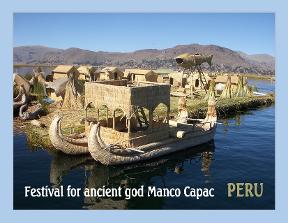
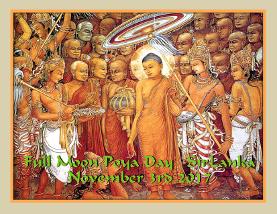
Full Moon Poya shrlanka November 3rd 2017
Commemorates Buddha's ordination of sixty disciples as the first missionaries.
Each full moon, and each corresponding Poya Day, has its own name and specific events it is meant to commemorate. These will be events related to Buddha and Buddhism. Some of the key events remembered on Poya Days include: Buddha’s birthday, Buddha’s enlightenment, Buddha’s sending out of 60 disciples as missionaries, the personal visits Buddha made to Sri Lanka, the bringing of Buddhism to Sri Lanka by Mahinda, and the first Buddhist Council held after Buddha’s death.
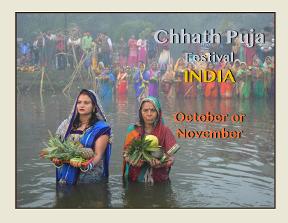
Chhath Puja festival ...India ...October -November
Chhath is an important four-day festival celebrated in accordance to the Hindu-Vedic tradition. Celebrated on the sixth day of the Karthik month in the Vikram’s Samrat, devotees worship the sun god for prosperity, well-being, happiness and focus in life. Originally celebrated mostly in northern Bihar and Nepal’s Mithila region, now many Indian states like Jharkhand, Bihar, eastern UP, Madhya Pradesh, Uttar Pradesh, Gujarat, Bangalore, Chandigarh, Chattisgarh, etc., also celebrate the festival with great fervour. The four-day festival falls four days after Diwali. This year, Chhath will be celebrated from November 4-7, with the main day of Chhath puja on November 3.
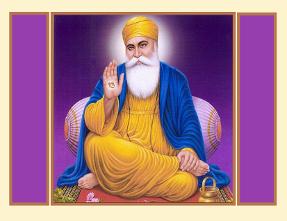
Festival of Guru Nanak Jay-anti ...Sikh Holy Day ...Full-Moon
Born about 550 years ago, Guru Nanak mysteriously disappeared for three days when he was 30. When he reappeared, he began to preach the Sikh faith. While there are some commonalities in practice between Sikhs and Hindus like beliefs in karma and dharma, Guru Nanak’s famous proclamation was, “I am not a Hindu, nor am I a Muslim.” The question you often hear in India from naïve foreigners is, “Are Sikhs Hindus?” A Hindu may say yes, while a Sikh may be more inclined to say no. If you’re a religiously-curious person, this is a good conversation starter but make sure you are completely respectful in how you ask the question and how attentive you are in listening. In a radical departure from Buddhism, Hinduism, and Jainism, Sikhism rejects the concept of ahimsa , harmlessness, and places great emphasis on fighting social injustice. Sikhism is now the world’s fifth largest religion.
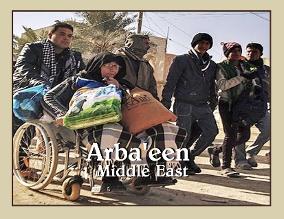
ARBA'EEN a holy time for many Muslims ( Mid-November 9th 2017 )
Arba'een is consistently A very large and peaceful gathering. The city of Karbala in Iraq is the center of the proceedings which many pilgrims travel miles on foot to reach. The distance between Basra and Karbala is a long journey even by car, but it is traveled annually on foot by Iraqi pilgrims, which takes them two weeks, or approximately one month to come from other countries like Iran. The crowds become so massive that they cause a blockade for hundreds of miles. In 2008, approximately nine million religious observers converged on Karbala to commemorate Arba’een.
Saint Martin's Day European Nations November 11th
Saint Martin's day, also known as the Feast of Saint Martin, Martinstag or Martinmas, as well as Old Halloween and Old Hallowmas Eve, is the feast day of Saint Martin of Tours (Martin le Miséricordieux) and is celebrated on November 11 each year. This is the time when autumn wheat seeding was completed, and the annual slaughter of fattened cattle produced "Martinmas beef". Historically, hiring fairs were held where farm laborers would seek new posts. Saint Martin of Tours was a Roman soldier who was baptised as an adult and became a monk. The most famous legend concerning him was that he had once cut his cloak in half to share with a beggar during a snowstorm, to save the latter from the cold. That night, he dreamt of Jesus, wearing the half-cloak and saying to the angels, "Here is Martin, the Roman soldier who is now baptised; he has clothed me." Saint Martin died on November 8, 397.
http://germanculture.com.ua/german-holidays/st-martins-day-martinstag/
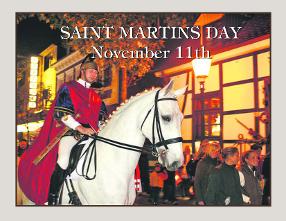
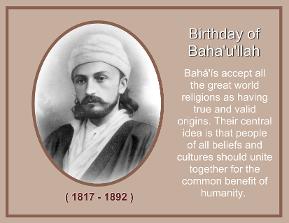
Birthday of Baha'u'llah Baha'i Religion November 12th
Bahá'ís accept all the great world religions as having true and valid origins. Their central idea is that people of all beliefs and cultures should unite together for the common benefit of humanity. Bahá’u’lláh, which mean Glory of God, was born on November 12, 1817 in Tehran, Iran, and was given the name of Mírzá Husayn-`Alí Nuri. He is considered the founder of the Baha’í faith and claimed to be the prophetic fulfillment of Bábism as well as a messenger of God announcing the fulfillment of the promises of Islam, Christianity, and other religions. Later he would be persecuted and put in to jail. On May 9, 1892, Bahá’u’lláh had a slight fever that worsened over the following days, and on May 29, he took his life. He is now buried in a shrine next to the Mansion of Bahjí, where he died. Bahá’u’lláh left behind many religious works that are now the base for the Baha’I, most notably the Kitáb-i-Aqdas, his book of laws. His works also include letters describing his vision of a united world and the need for ethical action, as well as many prayers.
Feast of Saint Hilda England November 17th
The English princess Hilda led a virtuous life in the world until at the age of thirty-three she resolved to consecrate her virginity to God as a nun. She had at first planned to leave her native land to enter a convent in France where her sister was a nun, "to live an exile for our Lord's sake...so that she might the more easily attain her eternal heavenly home" (as Saint Bede relates). But Hilda was instead persuaded to enter an English convent in Northumbria. Thereafter, she was chosen to become abbess of the nearby double-monastery of Hartlepool, a religious community of monks and nuns living separately in adjoining convents. Later, she served as abbess of another double monastery that came to be known as Whitby. The Synod of Whitby was a seventh century Northumbrian synod where King Oswiu of Northumbria ruled that his kingdom would calculate Easter and observe the monastic tonsure according to the customs of Rome, rather than the customs of the Celtic church.The synod was summoned in 664 at Saint Hilda's double monastery of Streonshalh (Streanæshalch), later called Whitby Abbey.In 867, the monastery was destroyed by Viking raiders, and was only refounded in 1078. It was in this period that the town gained its current name, Whitby, (from "white settlement" in Old Norse).
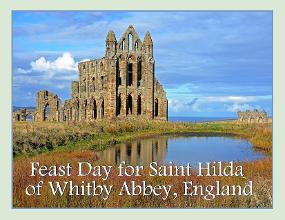
Saint Georges Day GEORGIA and others ...November 23rd
As a highly celebrated saint in both the Western and Eastern Christian churches, Saint George is connected with a large number of patronages throughout the world, and his iconography can be found on the flags and coats of arms of a number of cities and countries. Saint George is a patron saint of Georgia, and it is claimed by Georgian author Enriko Gabisashvili that Saint George is most venerated in that nation. An 18th-century Georgian geographer and historian Vakhushti Bagrationi wrote that there are 365 Orthodox churches in Georgia named after Saint George, according to the number of days in one year.[3][4][5] There are indeed many churches in Georgia named after the Saint; Alaverdi Monastery is one of the largest. .... Georgian Eastern Orthodox monastery located 25 km (16 mi) from Akhmeta, in the Kakheti region of Eastern Georgia. While parts of the monastery date back to 6th century, the present day cathedral was built in the 11th century by Kvirike III of Kakheti, replacing an older church of St. George.
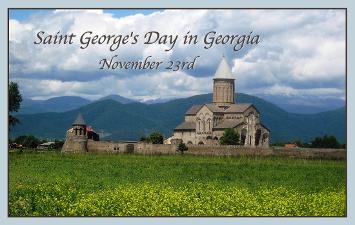
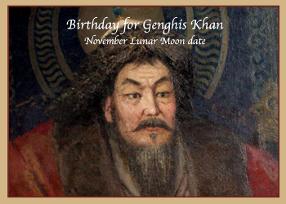
Birthday Festivals for Genghis Khan ...Mongolia ...based on Lunar calendar
The birthday of Genghis Khan (Chinggis Khaan) is a public holiday in Mongolia on the first day of winter based on the lunar calendar. It is a holiday that honours the founder and first Great Khan of the Mongol Empire. Due to the lack of written historical records the exact birth date of Genghis Khan is unknown. It is generally accepted that he was born in 1162, in the north of modern-day Mongolia, not far from Ulaanbaatar, the capital of Mongolia. In 2012, the Mongolian President issued a decree Genghis Khan's birthday as a national holiday on the first day (new moon) of winter under the Mongolian lunar calendar. On the morning of this holiday, the president, speaker of Parliament, prime minister, and key representatives from the government, the military, sports, arts, and herders will pay tribute to the statue of Genghis Khan.
Birthday celebrations for 2019 will take place on November 27
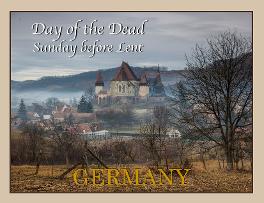
Totensonntag ( Sunday of the Dead ) ..Lutheran, Germany ...Sunday before Lent
Totensonntag (Sunday of the Dead) is a Lutheran religious holiday when all deceased are honored and remembered. It is observed on the last Sunday before Advent, a season of preparation for Christmas. Totensonntag was established by King Frederick William III of Prussia in 1816. Originally, it was observed by the Lutheran churches under Prussian rule, but eventually other Lutheran churches outside of Prussia followed suit. Totensonntag is also referred to as Ewigkeitssontag, which means Eternity Sunday. It has the status of a protected holiday in all the states (Länder) of Germany. The holiday laws of almost all federal states, Hamburg being an exception, have special provisions that classify Sunday of the Dead either as a silent day or a memorial day. During silent days, music is forbidden in public venues or can be played only at certain hours.
ADVENT SEASON ...Christian holy time Sunday in Nov or DEC - December 25th
Advent begins four Sundays before Christmas: December 3, 2017 Advent is a holy season in the Christian calendar. It is the beginning of the liturgical calendar. It is a very special time, as Christians wait and prepare for the coming of the Lord, Jesus whose birth we celebrate on Christmas. In the early days of the church, Advent was a time of prayer and confession. Today, Advent is more a time of preparation and expectation of the coming of the Lord. The Advent Wreath is an important symbol of Advent of the season. It usually sits on the dinner table and is a constant reminder of the holy season. The wreath is of German origin and consists for an evergreen wreath, and four Advent candles. Three candles are purple and one is pink. The lighting tradition- On the fourth Sunday before Christmas (the first Sunday of Advent), the first Advent candle is lit at dinner and a short prayer is said. The first candle is lit each night along with a short prayer. On the second Sunday of Advent, a second purple candle is lit. On the third Sunday the pink
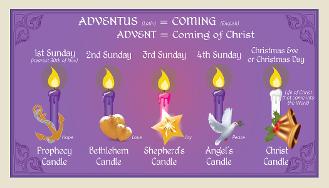
Holidays celebrated in the month of December
ADVENT Continues ...
Advent is a season in the Christian year that lasts for about four weeks. It begins four Sundays before Christmas and ends on Christmas Eve, there are some variations in its length. The ( Advent Wreath ) is often displayed in Catholic homes. Eastern Orthodox Christians do not recognize this event, but have a longer season that is like Advent. Their ( Nativity Fast ) begins in the middle of November and is a season for repentance and abstinence. ( Dec 16-24 Las Posadas ) (Mexico, Guatemala and other Central American countries). Las Posadas commemorate the journey of Mary and Joseph to Bethlehem and their search for a place to stay. Family and friends visit one another in their homes and enjoy conversations and traditional foods, and visitors sing carols. Colombians celebrate a similar holiday called “La Novena”, and for nine days, families pray and sing traditional carols.
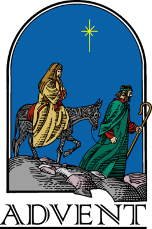
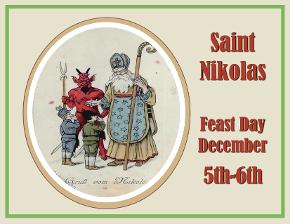
Feast of Saint Nicholas ( December 5th )
( December 5th ), The Feast of St. Nicholas is celebrated in parts of Europe on 6 December. In Alpine countries, Saint Nicholas has a devilish companion named Krampus On the preceding evening of December 5th, Krampus Night or Krampusnacht, the wicked hairy devil appears on the streets. Sometimes accompanying St Nicholas and sometimes on his own, Krampus visits homes and businesses. The Saint usually appears in the ( Eastern Rite vestments ) of a bishop, and he carries a ceremonial staff. Unlike North American versions of Santa Claus, in these celebrations Saint Nicholas concerns himself only with the good children, while Krampus is responsible for the bad. Nicholas dispenses gifts, while Krampus supplies coal and the ruten bundles.
Saint Nicholas Day ( December 6th )
December 6th, Saint Nicholas is a popular subject portrayed on countless Eastern Orthodox icons, particularly Russian ones. He is depicted as an Orthodox bishop, wearing the omophorion and holding a Gospel Book. Sometimes he is depicted wearing the Eastern Orthodox mitre, sometimes he is bareheaded. Iconographically, Nicholas is depicted as an elderly man with a short, full white fluffy beard and balding head. In commemoration of the miracle attributed to him by tradition , he is sometimes depicted with Christ over his left shoulder holding out a Gospel Book to him and the Theotokos over his right shoulder holding the omophorion. Because of his patronage of mariners, occasionally Saint Nicholas will be shown standing in a boat or rescuing a drowning sailor.
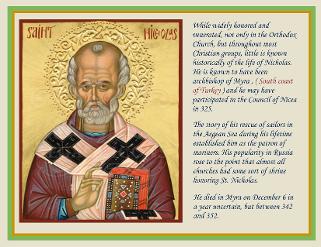
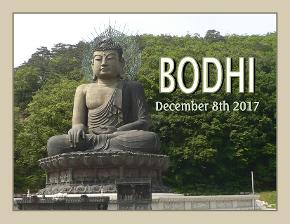
BODHI DAY
Bodhi Day ( December 8th ) is observed in many mainstream Mahayana traditions including the traditional Zen and Pure-land Buddhist schools of China, Korea, Japan, and Vietnam. In Japanese Zen, it is also known as Rohatsu. In Tendai and other Japanese sects. Services and traditions vary among many Buddhist sects, but all such services commemorate the Buddha's achievement of Nirvana, and what this all means for ( Buddhism ) today. Individuals may choose to commemorate the event through additional meditation, study of the Dharma, chanting of Buddhist texts (sutras), or performing kind acts towards other beings. Some Buddhists celebrate with a traditional meal of tea, cake, and readings.String multicolored lights around your home. These lights represent enlightenment.That they are multicolored represents the many pathways all of which are valid. Turn on the lights each evening starting on December 8 and for 30days after.
Immaculate Conception Day ...Catholic Church ...December 8th
The Feast of the Immaculate Conception takes place on December 08, 2016 in the Catholic Church. It is celebrated nine months before the feast of the Nativity of Mary, which is celebrated on September 8. The Immaculate Conception is a dogma maintaining that from the moment when she was conceived the Blessed Virgin Mary was kept free of original sin and was filled with the sanctifying grace normally conferred during baptism. The Feast of the Immaculate Conception is observed in many Catholic countries as a holy day of obligation or patronymic feast, and in some as a national public holiday. The feast is often celebrated with Holy Mass, parades, fireworks, processions, ethnic foods, and cultural festivities in honor of the Blessed Virgin Mary and is generally considered a "family day", especially in many Catholic countries.
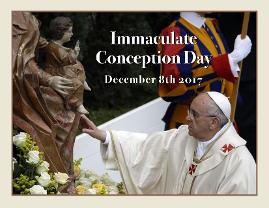
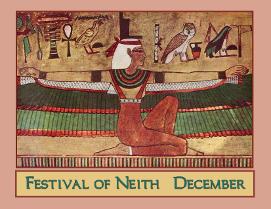
Festival of Neith ...Egyptian goddess ...December 8th 2017
As War-Goddess, She was said to make the weapons of warriors, and when they died She guarded their bodies until they could be buried. Furthermore She is said to weave the bandages and shrouds worn by the dead. As weaving Goddess She protected women and the home, and so many royal women named themselves after Neith. Although addressed as female, She was considered androgynous; in fact, it was often said that She is 2/3 masculine and 1/3 feminine. By Greek times there was a great annual festival in honor of Isis-Nit. Part of the festival, recorded by Herodotus, said that the people lit their houses with lamps and torches that were fueled by oil mixed with salt. The lamps and torches were kept burning until the morning, while the people themselves feasted. The virgin priestesses of the Temple of Neith engaged in armed combat each year for the position of High Priestess.
St. Kliment Ohridski (Clement from Ohrid) Gov. holiday, December 9th
A man of letters, teacher and propagator of the Slavonic script during the Middle Ages, St. Kliment Ohridski is venerated as one of Bulgaria’s greatest spiritual leaders. He was born in A.D. 840 or so in the North Macedonian region of the Bulgarian Empire of the time. He became a famous scholar and writer and a student and follower of both Saint Cyril and of Methodius. The Orthodox Church had established 25 November as the day to honor the memory of St. Kliment. However, the saint is revered not only by the church but also by all Bulgarians. This is so because St. Kliment Ohridski contributed not only into the consolidation of Christian faith in Bulgaria, but also led the process in which the Bulgarian nation emerged as a nation with its unique alphabet and culture. ... PHOTO: St. Panteleimon Church in Ohrid, Macedonia.
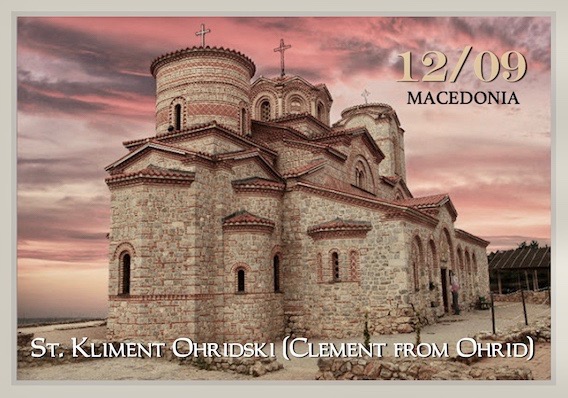

National Farmers Day in Ghana, Africa ( First Friday in December )
The National Farmers Day is commemorated each year on the first Friday of December to honor our gallant Farmers and Fishers. The event acknowledges the vital position Farmers and Fishers occupy in the nations socioeconomic development.In particular, Ghana acknowledges farmers and fishers untiring efforts at feeding our growing population, providing raw materials to the nation’s industries, and contributing substantially to the nation’s foreign exchange earnings
During the Late Fall Season December 12th -20, 2017
The Hanukiah festival is observed by the kindling of the lights of a unique candelabrum, the seven or nine-branched menorah or hanukiah, one additional light on each night of the holiday, progressing to eight on the final night. The typical menorah consists of eight branches with an additional visually distinct branch. The eight-day Jewish celebration known as Hanukkah or Chanukah commemorates the rededication during the second century B.C. of the Second Temple in Jerusalem, where according to legend Jews had risen up against their Greek-Syrian oppressors in the Maccabean Revolt. Hanukkah, which means “dedication” in Hebrew, begins on the 25th of Kislev on the Hebrew calendar and usually falls in November or December.
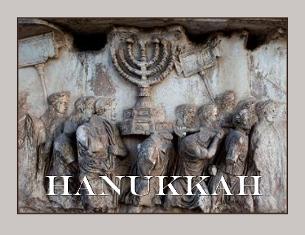
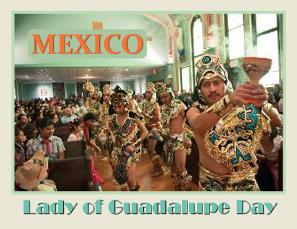
Lady of Guadalupe Day ...Catholic - Mexico ...December 12th
It is believed that a man named Juan Diego encountered the Virgin Mary twice in Mexico City, on December 9th and December 12th in 1531. According to legend, Mary told Juan to ask the bishop to build a church on Tepeyac Hill. However, the bishop needed proof of Juan’s encounter and asked for a miracle. Juan returned to the hill to see roses in a spot where there were previously cacti. When Juan Diego returned, he showed the roses to the archbishop and also revealed an image on his cloak of the Lady of Guadalupe. The bishop was convinced of the miracle and built a church in honor of the event. According to the story of the Lady of Guadalupe, Mary spoke in the Nahuatl language when she appeared to Diego. It is said that millions of indigenous people in Mexico were converted to Catholicism as a result of her appearance and miracle.
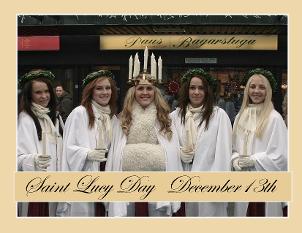
Saint Lucy Day, ...Sweden, Italy ...DECEMBER 13th
December 13th ( Saint Lucia or Lucy Day ) ....In Sweden the CHRISTMAS SEASON begins on December 13, St. Lucy’s Day. St. Lucy’s Day celebrations feature girls who dress and act as the saint. Crowned with wreaths of GREENERY studded with glowing candles, they sing songs about St. Lucy and distribute GIFTS of food. In North America, some Swedish families, churches, schools, and institutions also celebrate St. Lucy’s Day. ITALY, the country of Lucy’s birth, honors her feast day as well. St Lucia was a young Christian girl who was martyred, killed for her faith, in 304. The most common story told about St Lucia is that she would secretly bring food to the persecuted Christians in Rome, who lived in hiding in the catacombs under the city. She would wear candles on her head so she had both her hands free to carry things. Lucy means 'light' so this is a very appropriate name.
INDIAN Full Moon HolY-Day ...INDIA ...Mid December
Jaya Sri Maha Bodhi, as famously known, is a sacred fig tree in Anuradhapura said to be a sapling from the historical Bodhi tree under which the Buddha achieved enlightenment. The sapling belongs to the southern branch of the original Bodhi tree in Bodh Gaya. Planted in 288 BC, the Bo tree is the most ancient human-planted tree with a traceable date. King Devanampiyatissa planted the sapling in Mahameghavana Park, Anuradhapura, in 249 BC. The bo tree is planted on 6.5m (21.3ft) high terrace on the ground and is surrounded by railings. Much revered by the Buddhists both Sri Lankan and across the globe, the tree was surrounded by a wall built during King Kirthi Sri Rajasinghe's period.
http://srimahabodhi.org/fernando.htm
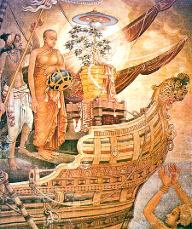
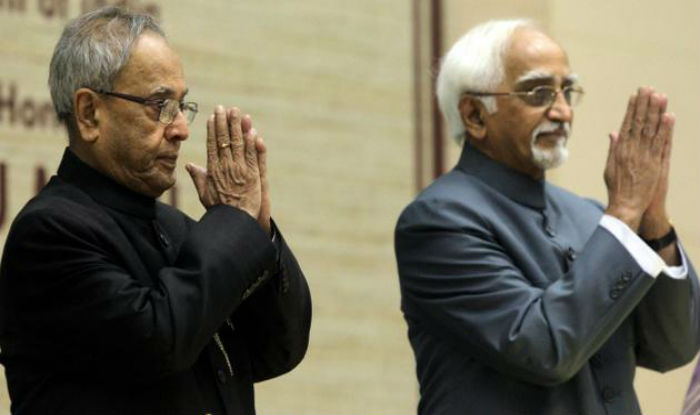
Milad-un-Nabi ...Muslim Holy Day ...December 13th
Those who observe Milad-un-Nabi gatherings remember, discuss and celebrate the advent of the Prophet Muhammad's birth and his teachings. Some people send Milad-un-Nabi e-cards to friends and family. Many Sunni Muslims celebrate this event on the 12th of the Islamic month of Rabi' al-awwal, while the Shi'a community celebrates it on the 17th of Rabi' al-awwal. Milad un-Nabi is a gazetted holiday in India so government offices, post offices and banks are closed on the day. Islamic stores, businesses and other organizations may be closed or have reduced opening hours. Those wishing to use public transport on the day may need to contact the local transport authorities to check on timetables. Large prayer meetings, parades and marches may cause local disruption to traffic. This is particularly true of areas of India with a predominantly Muslim population.
Gishisai festival in Ako, Japan, December 14th
Gishisai, as the festival is locally known, takes places yearly on December 14th. Ako Primary, Junior schools and local business close as the town's streets are lined with festival stalls and colored lanterns. Every year on December 14th, which corresponds to the anniversary of the uchiiri (raid), large numbers of people respecting the masterless vassals of Akoh visit the temple to pay homage to them at their burial site, and watch the Gishi Gyoretsu which is a procession of volunteers dressed as the 47 masterless vassals parading through the streets. The entire neighborhood becomes packed with crowds of visitors.
Read more: http://www.japanvisitor.com/japanese-festivals/festival-ako#ixzz3uINhrKU0
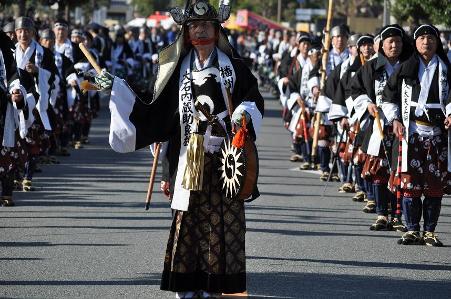

WORLD WIDE " MONKEY DAY " ( December 14th )
The holiday was started in 2000 when artist Casey Sorrow, then an art student at Michigan State University, jokingly scribbled Monkey Day on a friend's calendar, and then first celebrated the holiday with other MSU art students. It gained notoriety when Sorrow and fellow MSU art student Eric Millikin began including Monkey Day in their artwork and Fetus-X comic strips, and began promoting it online along with other artists. Since then, Monkey Day has been celebrated internationally, across countries such as the United States, Canada, Germany, Pakistan, Estonia, United Kingdom and Colombia
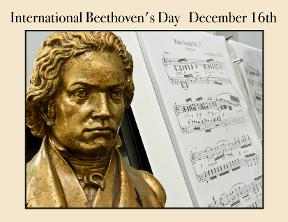
International Beethoven's Birth - day ( December 16th )
Ludwig van Beethoven; German: City of Bonn, ( Baptised 17, December, 1770 – died, 26, March 1827 ) was a German composer and pianist. A crucial figure in the transition between the Classical and Romantic eras in Western art music, he remains one of the most famous and influential of all composers. His best-known compositions include 9 symphonies, 5 piano concertos, 1 violin concerto, 32 piano sonatas, 16 string quartets, his great Mass the Missa solemnis and an opera, Fidelio.Listen to: ( Beethoven's Christmas Symphony ) This city of Bonn is a spectacular Christmas shop ...No matter what kind of shopper you are, a tour through Bonn's Market Square is a must so that you can marvel at the hundreds of boutiques, cafes and restaurants at this historical location in the Old Town Center. Medieval architecture and pedestrian paths are the highlight of the experience, as is the Altes Rathaus (Old Town Hall) at the southeastern side of the square.
SAINT NICHOLAS DAY ...UKRAINE ...DECEMBER 19th
Nicholas. For Ukrainians, Christmas begins with St. Nicholas Day, December 19, when young children receive small gifts from their patron saint, Nicholas. Parishes and schools remember Nicholas' providing dowry money for needy young women by giving small bags of gold-colored coins to children. Saint Nicholas is the Orthodox tradition's Wonder or Miracle Worker. As such he is Russia's most beloved saint; his icon often appearing on triptychs with Jesus and the Blessed Virgin Mary. Sviatyij Mykolai, comes to Ukraine on December 6th (or the 19th in the Orthodox Julian calendar). The night is often called "Magic Night" or just St. Nicholas Day. It is seen as a universal children's festival. In Russia is St. Nikola's winter day, December 6th or 19th, was believed to be the beginning of winter matchmaking. Legend had it that on this day St. Nicholas comes down from heaven and goes about the whole land, helping ordinary people. St. Nicholas Feast Day was the second most important holiday, only Easter was greater. It was believed that Nicholas held the keys to Heaven, opening the gates of Paradise and meeting those who had died. In the 1600 and 1700s letters to Saint Nicholas were placed in the hands of the deceased, requesting that their sins be forgiven.
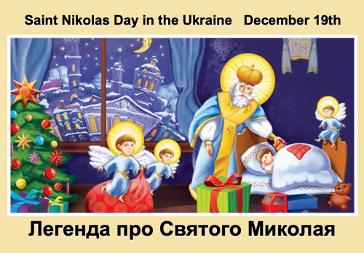
Spanish in origin: Las Posadas ( December 16th - Dec. 25th )
A holy history lesson: The roots of Las Posadas stretch deeply into Latin culture. It originated in Spain, but it’s been a yearly celebration throughout Mexico for over 400 years. The tradition commemorates Mary and Joseph’s difficult journey from Nazareth to Bethlehem in search of a warm place to stay the night. (Posadas is Spanish for “lodgings” or “accommodations.”)Beginning on December 16 and ending nine days later, on December 24, Las Posadas commemorates the nine months of Mary’s pregnancy. Each night, one family agrees to house the pilgrims. And so it begins: At dusk, a procession of the faithful takes to the streets with children often dressed as angels and shepherds. Religious figures, images and lighted candles are a part of the festivities.
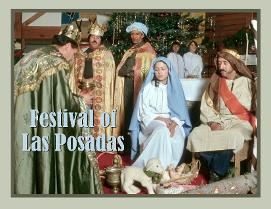
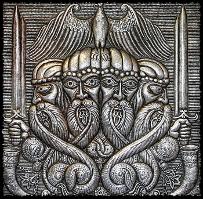
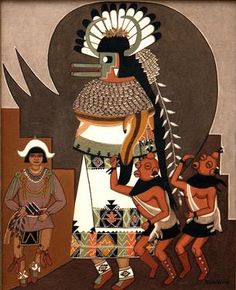
Korochun ...Slavic Pagan ...December 21st Winter Solstice
Korochun is a pagan Slavic holiday. It is considered the day when the Black God and other spirits associated with decay and darkness were most potent. The first recorded usage of the term was in 1143, when the author of the Novgorod First Chronicle referred to the winter solstice as "Korochun". It was celebrated by pagan Slavs on December 21 the longest night of the year and the night of the winter solstice. On this night, Hors, symbolizing the old sun, becomes smaller as the days become shorter in the Northern Hemisphere, and dies on December 22, the winter solstice. It is said to be defeated by the dark and evil powers of the Black God. On December 23 Hors is resurrected and becomes the new sun, Koleda.
Sha'lak'o Ceremony ...Native American ...Winter Solstice
In Sha’lak’o, a Zuni boy, carrying a burning cedar torch and wearing a bag of seeds over his shoulder, represents the Fire God. He is painted black with circles of red, yellow, blue and white—the colors of the sun in Zuni iconography. The Fire God is followed by the Rain God of the North, who emerges behind a mask of black and white stripes. A long curved horn juts out of his right side, and he is dressed in white buckskin and adorned with jewelry. Others of the Council of Gods come, including the Shalako, the messengers of the gods. The Shalako wear masks symbolizing birds with clacking bills topping nine-foot-tall costumes of painted buckskin stretched over willow-wood frames. Crossing the Zuni River, the Shalako dance in intricate patterns, reflecting “the village and the people’s state of grace,” the book states. Dancing ensues for four more days, and then new dancers are chosen for the next year, so as the cycle ends, it also begins.
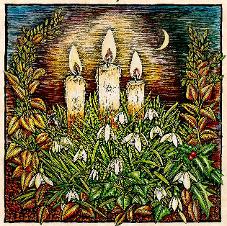
YULE ....International ( Pagan ) December 21st
Yule ( yew-elle ) is an international tradition often celebrated on December 21. The Winter Solstice is the first day of Winter, it is also the shortest day and longest night of the year. Sometimes refered to as the day of Alban Arthuran, or " Light of Arthur ", A Fire Festival is sometimes performed. Yule is considered an Arcaic word meaning Christmas?
There are many ancient and modern cultures who Celebrate the end of darkness, the return of light to the Earth.
Gifts celebrated the sharing of the remaining harvest now that light would return and ceremonies involve Mistletoe, Burning of the Yule log ( Icelandic tradition ) on " Wreath day " is the first of four Sundays before Winter Solstice
Colors: include Green, red, white, silver, gold. https://www.theceltictimes.com/index.php/irish-stories-main-menu/irish-stories-may-2014
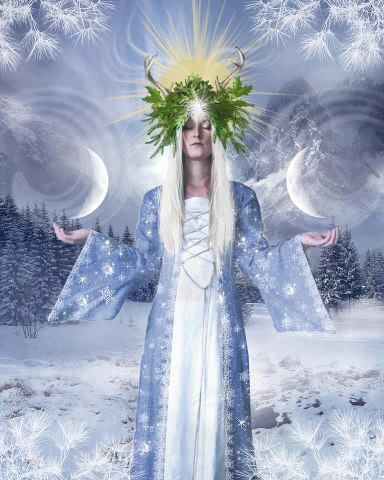
Dazh Boh Winter festival ....Russia/Ukraine ...December 21st
Dazh Boh is the Ukrainian (Russian) Winter Solstice festival, celebrating their giver God, Dazh Boh, or Dazhbog. Dazh Boh not only celebrates the returning sun but the ancestors as well. The Ukrainian custom of didukh, meaning grandfather, is an ancient custom honoring the ancestors that is still done today. A collection of wheat sheaf's or mixed grain stalks is placed under the images of deity in the house. It is still believed that the ancestor's spirits still reside in the wheat and grain during the holidays. In areas of Russia there is a woman (Marena; Marzana goddess of winter and the earth) clad in white, who is drawn on a sledge from house to house with maiden attendants who sing the Kolyada in anticipation of gifts in return for their gift of song. Some say She represents the goddess of the Sun, as has been said that in Russian folklore the sun is female but there seems to indication that She is a Goddess in her own right who is consort of the God Dazhbog for it is said when the days began to grow longer, she enters her sledge, dressed in her best finery with a stunning circlet, speeds her horses toward summer, toward Dazhbog.
